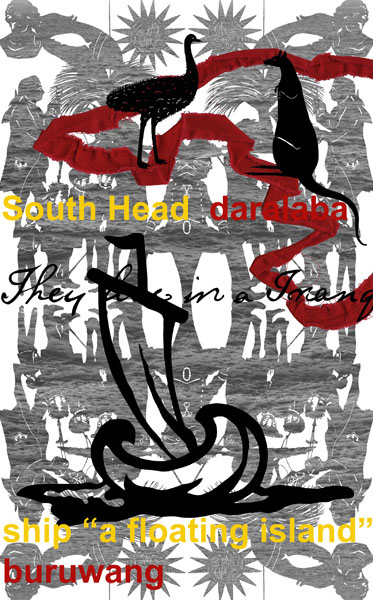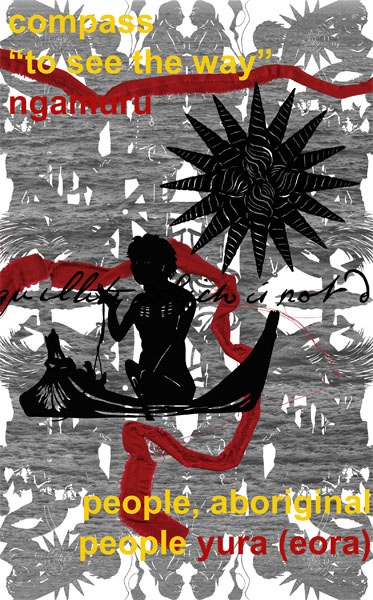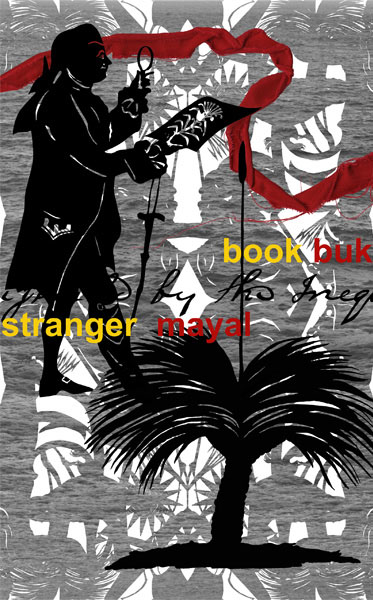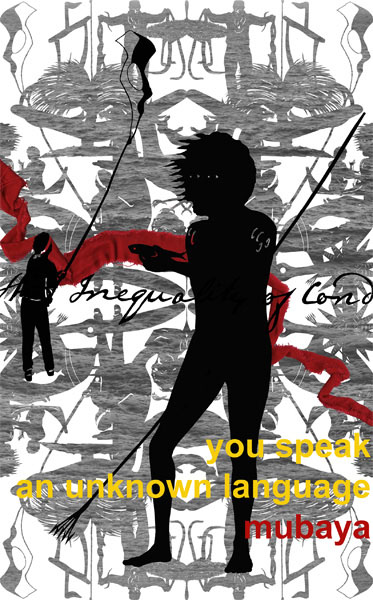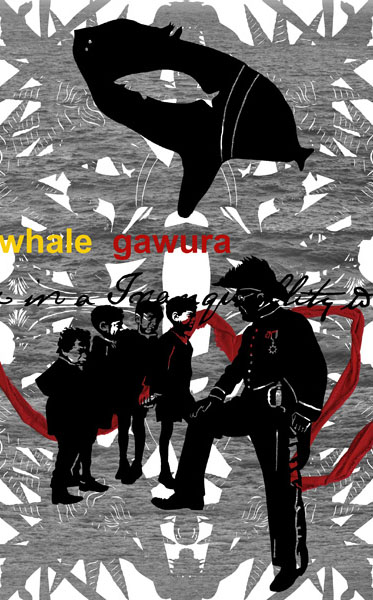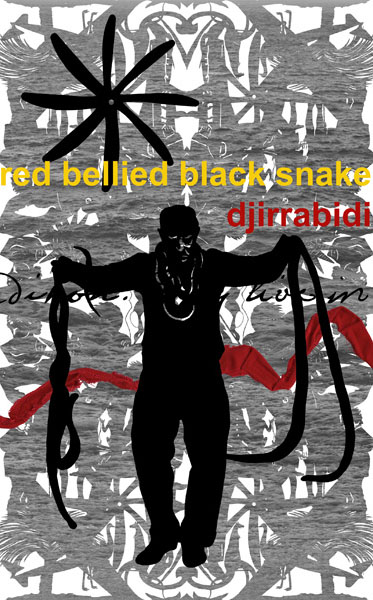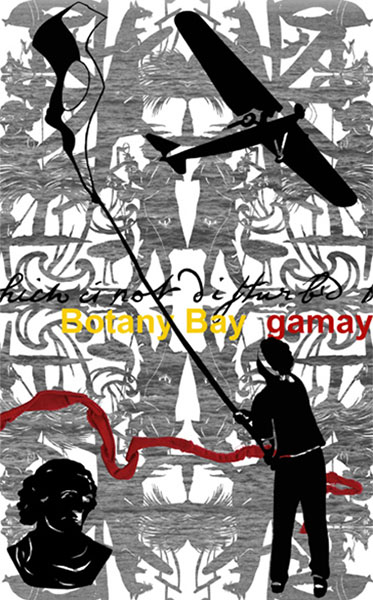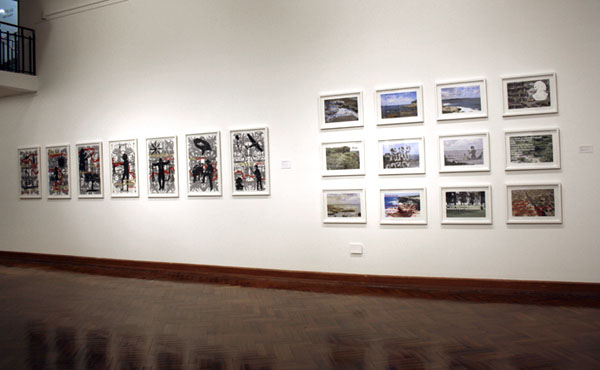Botany Bay and glittering Sydney Harbour remain the most popular single signifiers of Australia to the world. The coastline linking the two harbours is the first sight of the New World for many new arrivals by sea or air. The print folio Drawing the line between Stranger and Native takes as its field of view the coastline between Cape and Cape, from the northern arm of Botany Bay to North Head and the entrance to Port Jackson. Instead of drawing rocky inlets, arcs of shining sand and grids of red tiled roofs, the work is a metaphoric timeline charting the repercussions of the apocryphal first encounter of Stranger and Native, the world’s dominant European culture and the world’s oldest culture.
The title, Drawing the Line between Stranger and Native takes up eminent historian and anthropologist Greg Dening’s idea of the edge of land/edge of sea as a temporary zone of encounter, a place of relative peace and performative space. Dening recognises the serious inequalities in the encounter, in particular the victor’s power over interpretation. No outsider can mediate between the dispossessed living and the voiceless dead, but the Native/Stranger tableau reconstructs the high stakes.
As Dening writes in Mr Bligh’s Bad Language: Passion, Power and Theatre on the Bounty (1992) pp. 178-9.
“There is now no Native past without the Stranger, no Stranger without the Native. No one can hope to be mediator or interlocutor in that opposition of Native and Stranger, because no one is gazing at it untouched by the power that is in it. Nor can anyone speak just for the one, just for the other. There is no escape from the politics of our knowledge, but that politics is not in the past. That politics is in the present.”
My coastline/timeline, therefore, links the innocence of scientific fact finding with the larger and darker historical narrative of Colonial and Imperial relations. Cook’s instructions after leaving Tahiti were in the language of Imperial competition—to look for a Great Southern Continent. The primal scene on the thin strip of white sand abutting the blue waters is heavy, not just with the perfume of scientific wonder but the foreboding of invasion and conquest.
Drawing the Line Between Native and Stranger 1, digital pigment print on watercolour paper, 83 x 54 cm
Drawing the Line Between Native and Stranger 2, digital pigment print on watercolour paper, 83 x 54 cm
Drawing the Line Between Native and Stranger 4, digital pigment print on watercolour paper, 83 x 54 cm
Drawing the Line Between Native and Stranger 5, digital pigment print on watercolour paper, 83 x 54 cm
Drawing the Line Between Native and Stranger 6, digital pigment print on watercolour paper, 83 x 54 cm
Artworks: Edition of 3 with 2 artist proofs


